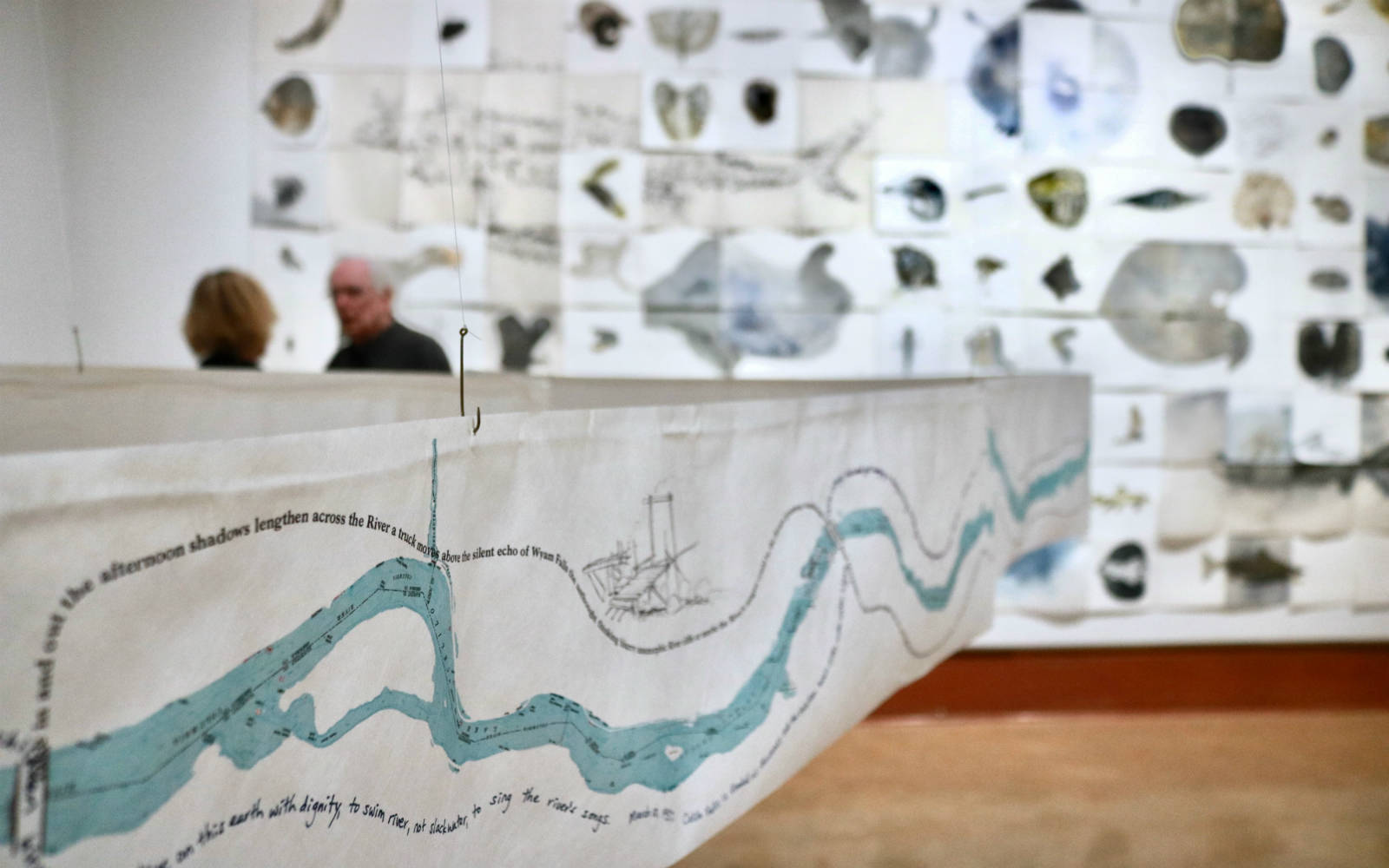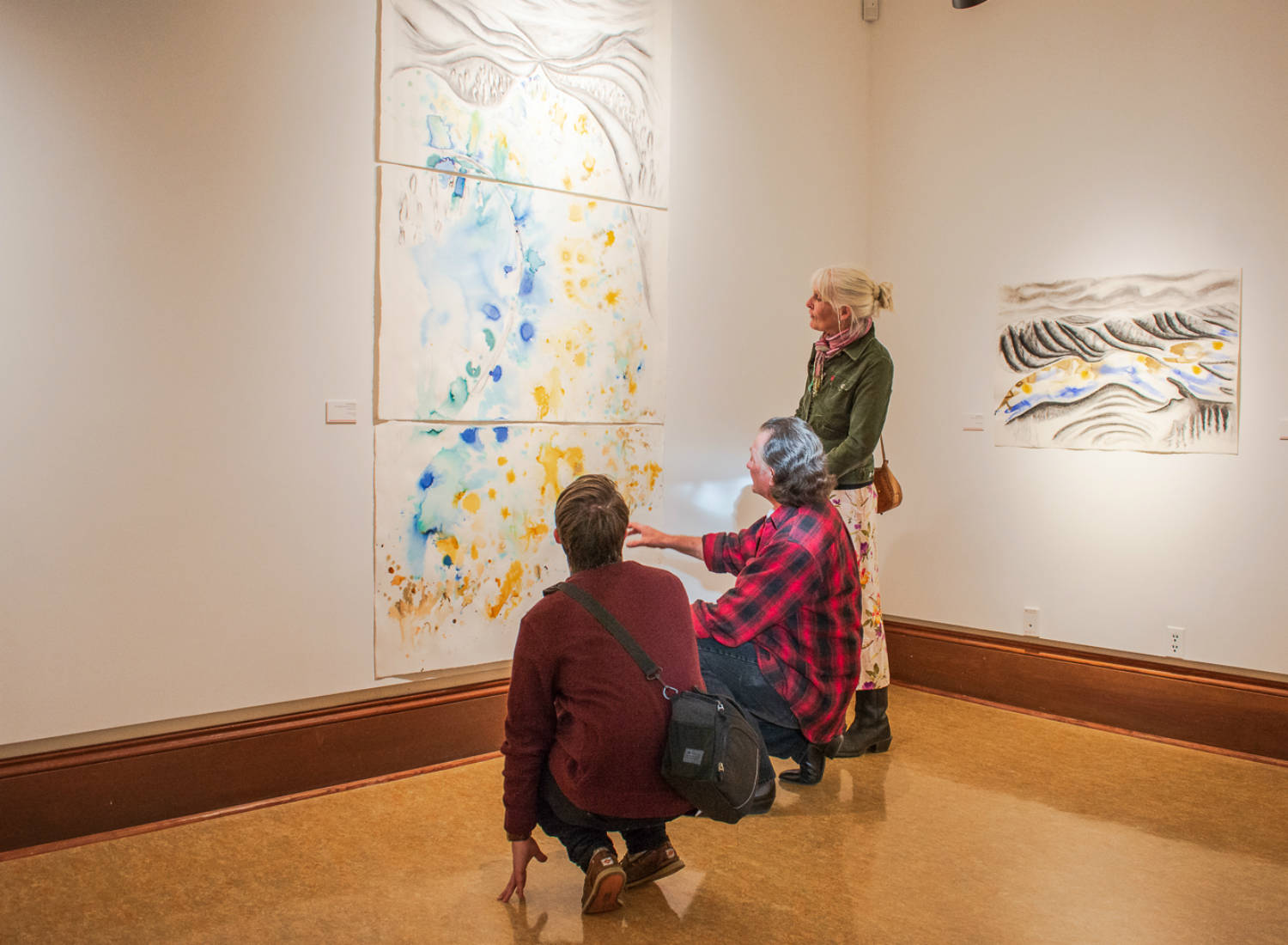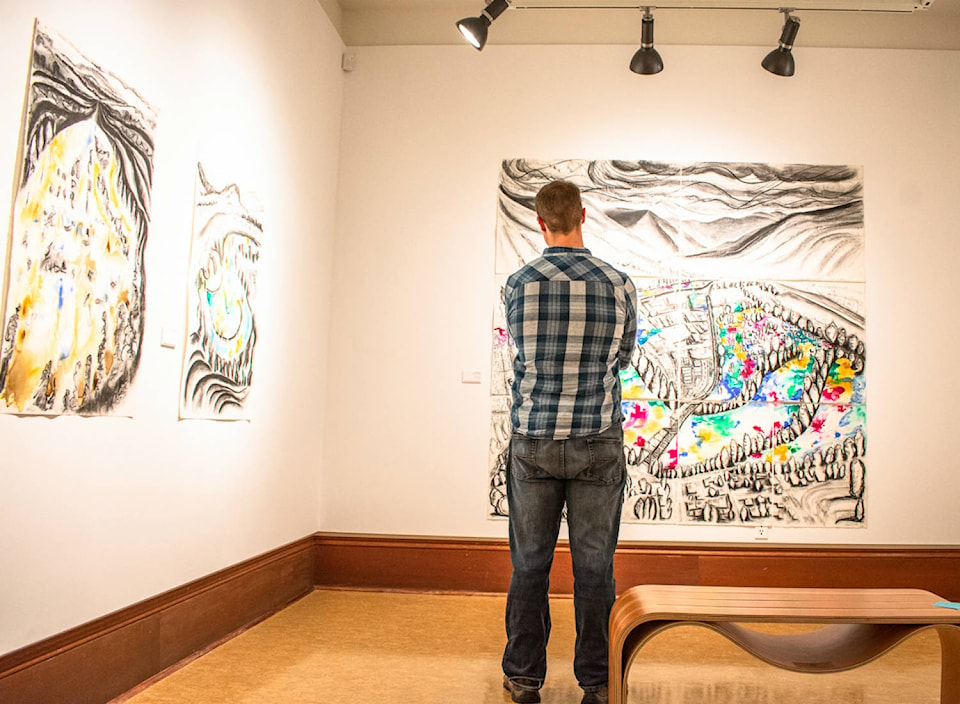Dave Soroka’s shiny black cowboy boots creased behind his toes as he crouched down in front of a wall-sized painting at Gallery 2 last Friday to get a better look at details revealed by brown, yellow and blot ink blots. Amidst the sprawling valley landscape laid out by artist Leta Heiberg in three paper panels, Soroka’s eyes seemed to contemplate a small patch of ink splotches in the bottom-right corner of the expansive piece.
The dots he saw were dabs of precision amidst randomness. Just like when he returned to his property after the Kettle had washed its silt over it all, so randomly and perfectly invading the landscape. Heiberg’s splotches of ink, in that small corner, were that silt — mud on something so meticulously cared for, blotting out the bits of intention that Soroka had created over 30 years on his property before the water came and left the debris behind. Just like the mud and the sand and debris, Heiberg’s trailing brown blotches resembled reminders that despite the receding waters and memories, the flood has left its fine memories in the people and the land of Grand Forks.
The piece Soroka examined was one of the final pieces in Heiberg’s “Flood (re)views” series, which she completed nearly a year after the water retreated. The Grand Forks artist based the paintings off of aerial photographs taken by a Search and Rescue friend at the peak of the high water, after she said that seeing the images gave her a new perspective on the disaster.
“They were actually really beautiful,” Heiberg said. “It was a sunny day, and so even though it was horrific and devastating, it was beautiful.”
Heiberg’s artistic understanding of those photographs now hang in Gallery 2 as giant and sprawling charcoal and ink interpretations of the ranging flood waters.
The early works in the series consume their viewers in thick, vertiginous lines of swirling black mountains and chaotic and colourful rivers.
“If we are living in a climate of change and chaos are we not also experiencing that same state mentally?” Heiberg suggested, offering some explanation to the sense of being overwhelmed given by some of the “Flood (re)views” pieces.
“When everyone else’s lives basically turn to one event all at the same time, it does feel a bit claustrophobic I think,” Heiberg said, interpreting the staggering feelings that her works can give viewers.
However, “as [this] spring came about and also the distance of time from the event, your perspective just seems to — well, it fades a little,” Heiberg said, explaining the comparatively open and breathable sense offered by the more loosely connected ink splotches in her spring pieces.
In their isolation though, the fewer ink splotches still have a power. The charcoal and ink blots don’t extend to the edges of the frame like pieces done in the winter, there is a more narrow palate of colours (no more magentas and deep blues, just light and placid aqua colours beside earthy yellows and browns), but none the less, the blotches linger. It’s part of what drew Soroka to take a closer look.
“It’s not like it’s gone,” Heiberg said of the community’s memory of the disaster. “It’s just not as all-consuming and present. It’s not as intense as it had been.”
“Flood (re)views” is just one of several water-related feature exhibitions that opened at Gallery 2 last Friday. In the adjacent room, a 114-foot map of the Columbia River meanders through the main gallery, complete with a winding poem written by former Canadian Parliamentary Poet Laureate Fred Wah that relays stories of the treaties struck along the river’s banks. Elsewhere, a series of photos and etchings that overlay the mechanics of hydro-electric infrastructure with natural landscapes, while a wall of paintings, done from actual silt from various areas of the river covers the wall, that depicts ancient fossils found in the Columbia’s bed serves as a backdrop to the winding verses that are suspended in the gallery by hundreds of fish hooks.
The river-related exhibitions represent curator Tim van Wijk’s first suite of exhibitions that are entirely the result of his own curatorial work, after having taken over the helm of Gallery 2 in 2017.
Van Wijk said he was already planning the exhibit in the fall before the flood but after May 2018, the curator said, “There [was] no way we could have a show about rivers and not somehow talk about the flood.”
There was a role that Gallery 2 could play in Grand Forks’s recovery, the curator said. “It kind of took on a new urgency or meaning in terms of how arts and culture contribute to the social fabric of the community,” he explained.


